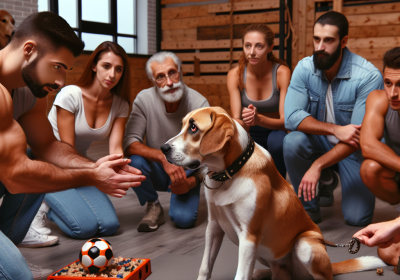The Importance of Mental Stimulation for Dogs
Table of Contents
- Benefits Of Mental Stimulation For Canine Health
- Enhancing Problem-Solving Skills Through Canine Freework
- Reducing Anxiety and Stress in Dogs Using Canine Freework Techniques
Mental stimulation is crucial for the overall well-being of dogs, playing a significant role in their physical health, emotional stability, and behavioral development. Just like humans, dogs require mental challenges to keep their minds sharp and engaged. Without adequate mental stimulation, dogs can become bored, anxious, and even develop destructive behaviors. Engaging a dog’s mind through activities such as puzzle toys, training exercises, and interactive play not only enhances their cognitive abilities but also strengthens the bond between the dog and its owner. Providing mental stimulation is essential for ensuring a happy, healthy, and well-adjusted canine companion.
Innovative Ideas for Canine Freework Challenges
Creating challenging canine freework tasks for dogs requires a blend of creativity, understanding of canine behavior, and a commitment to enhancing the physical and mental well-being of our furry companions. Freework, a concept that encourages dogs to engage in natural behaviors through structured activities, can be an excellent way to stimulate their minds and bodies. To design innovative freework challenges, it is essential to consider the dog’s individual needs, preferences, and abilities.
One effective approach to creating engaging freework tasks is to incorporate a variety of sensory experiences. Dogs rely heavily on their senses, particularly smell, to interact with the world around them. By introducing different scents into their environment, you can create a stimulating and enriching experience. For instance, hiding treats or toys infused with various scents around the house or yard can encourage dogs to use their noses to locate the hidden items. This not only provides mental stimulation but also taps into their natural foraging instincts.
In addition to olfactory challenges, incorporating tactile elements can further enhance the freework experience. Dogs enjoy exploring different textures with their paws and mouths. Setting up a sensory path with materials such as grass, sand, gravel, and rubber mats can provide a diverse range of tactile sensations. As the dog navigates through the path, they will encounter various surfaces that engage their sense of touch, promoting both physical and mental engagement.
Moreover, integrating problem-solving tasks into freework activities can significantly benefit a dog’s cognitive development. Puzzle toys, for example, are an excellent way to challenge a dog’s problem-solving abilities. These toys often require the dog to manipulate parts or solve a sequence of actions to access a reward. By varying the complexity of the puzzles, you can tailor the challenge to suit the dog’s skill level, ensuring that they remain engaged and motivated.
Transitioning from sensory and cognitive challenges, it is also important to incorporate physical activities that promote overall fitness and coordination. Agility courses, for instance, can be adapted for freework by including obstacles that encourage natural movements such as jumping, crawling, and weaving. Setting up a mini agility course in your backyard or a local park can provide an exciting and dynamic environment for your dog to explore. This not only helps to improve their physical fitness but also enhances their confidence and coordination.
Furthermore, social interaction can play a crucial role in freework tasks. Dogs are inherently social animals, and incorporating activities that involve interaction with other dogs or humans can be highly beneficial. Organizing playdates with other dogs or participating in group training sessions can provide opportunities for socialization and cooperative play. These interactions can help to build social skills, reduce anxiety, and promote a sense of community among dogs and their owners.
In conclusion, creating challenging canine freework tasks involves a thoughtful combination of sensory, cognitive, physical, and social elements. By understanding and catering to the individual needs of each dog, we can design activities that not only provide enrichment but also contribute to their overall well-being. Through innovative and engaging freework challenges, we can foster a deeper bond with our canine companions while ensuring they lead happy, healthy, and fulfilling lives.
Reducing Anxiety and Stress in Dogs Using Canine Freework Techniques

Mental stimulation is a crucial aspect of a dog’s overall well-being, often as important as physical exercise. One effective method to reduce anxiety and stress in dogs is through the use of canine freework techniques. These techniques, which involve allowing dogs to explore and interact with their environment in a controlled manner, can significantly enhance their mental health. By engaging their senses and encouraging natural behaviors, canine freework provides a holistic approach to managing stress and anxiety in dogs.
To begin with, canine freework techniques offer a structured yet flexible way for dogs to engage with their surroundings. This method involves setting up an environment with various objects, textures, and scents that the dog can explore at their own pace. The primary goal is to stimulate the dog’s senses and cognitive functions, which can be particularly beneficial for dogs that experience anxiety or stress. By allowing dogs to investigate and interact with different elements, they can develop a sense of control and confidence, which is essential for reducing anxiety.
Moreover, canine freework techniques can help to alleviate stress by providing mental challenges that keep dogs engaged and focused. Mental stimulation is known to release endorphins, which are natural mood enhancers. When dogs are mentally engaged, they are less likely to exhibit stress-related behaviors such as excessive barking, chewing, or pacing. This is because their minds are occupied with problem-solving and exploration, leaving little room for anxiety to take hold. Consequently, regular mental stimulation through freework can lead to a calmer and more balanced dog.
In addition to reducing anxiety, canine freework techniques can also improve the bond between dogs and their owners. When owners participate in setting up and guiding their dogs through freework activities, it fosters a sense of teamwork and trust. This collaborative effort can strengthen the human-animal bond, making the dog feel more secure and supported. A strong bond with their owner can be a significant factor in reducing a dog’s anxiety, as it provides a stable and reassuring presence in their life.
Furthermore, canine freework techniques can be tailored to suit the individual needs of each dog. This customization is particularly important for dogs with specific anxieties or stress triggers. For instance, a dog that is fearful of loud noises can benefit from a freework setup that includes gentle, soothing sounds. Similarly, a dog that is anxious around new people can be introduced to freework activities that gradually involve human interaction in a controlled and positive manner. By addressing the unique needs of each dog, freework techniques can provide targeted mental stimulation that effectively reduces anxiety and stress.
It is also worth noting that canine freework techniques can be easily integrated into a dog’s daily routine. Unlike some training methods that require extensive time and effort, freework can be set up in a relatively short period and can be adjusted to fit into the owner’s schedule. This accessibility makes it a practical option for many dog owners who are looking for ways to improve their dog’s mental health without significant disruption to their daily lives.
In conclusion, the importance of mental stimulation for dogs cannot be overstated, particularly when it comes to reducing anxiety and stress. Canine freework techniques offer a versatile and effective way to engage a dog’s mind, providing numerous benefits that contribute to their overall well-being. By incorporating these techniques into their routine, dog owners can help their pets lead happier, more balanced lives, ultimately enhancing the quality of life for both the dog and the owner.
Read more about Canine Freework
Canine Freework and Mental Stimulation
– The Importance of Mental Stimulation for Dogs
– How Canine Freework Can Provide Mental Stimulation
– Creating Challenging Canine Freework Tasks for Dogs
– Combining Canine Freework with Mental Exercises
– Overcoming Mental Challenges in Canine Freework


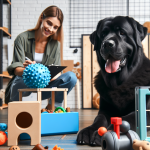

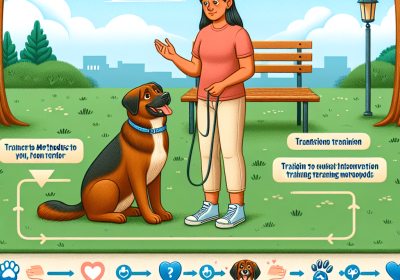
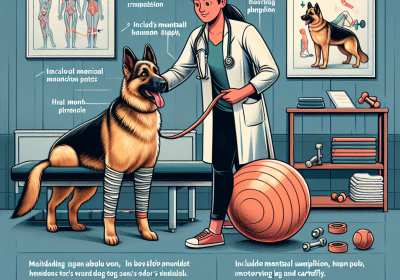
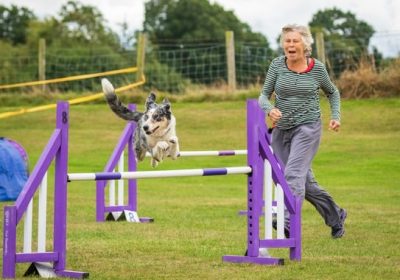
![The Dog Podcast Uncovers Startling Truths About What We Feed Our Dogs [Press Release]](https://wordcraftershub.com.au/wp-content/uploads/2024/08/dalmatian-dog-food-400x280.jpg)
